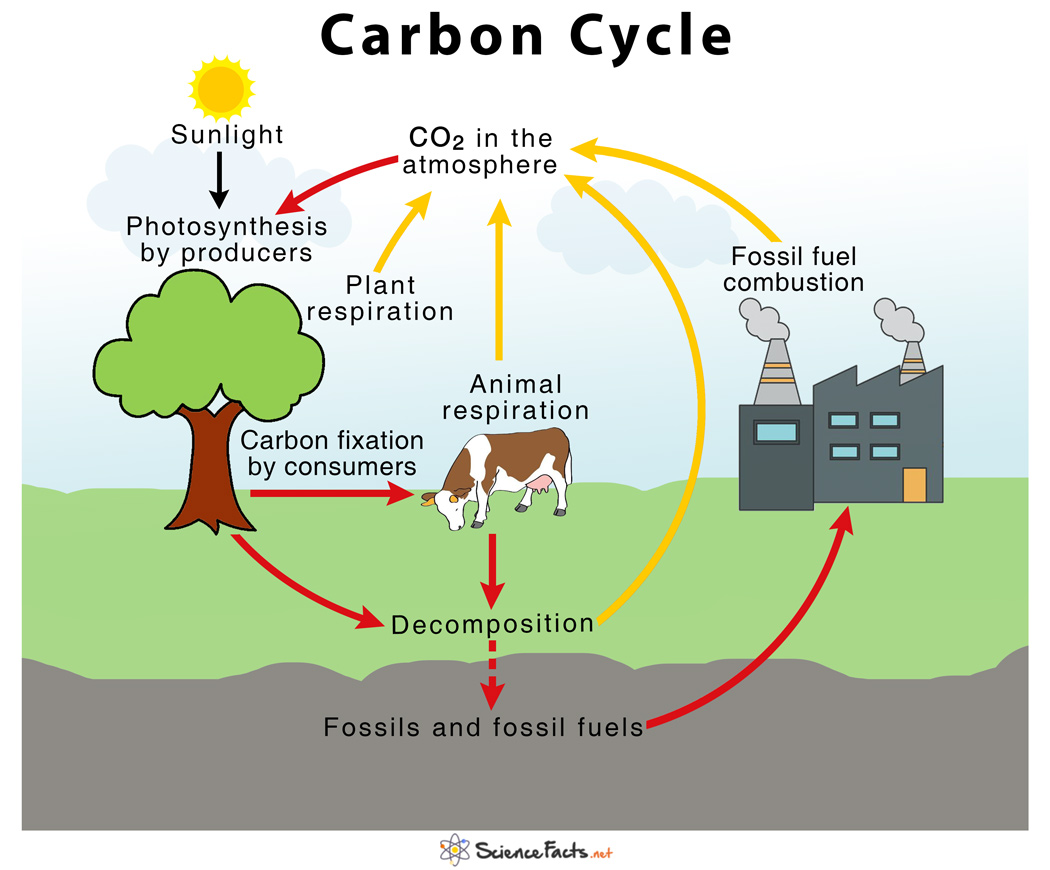14.7 NUTRIENT CYCLING
14.7 NUTRIENT CYCLING
- You have studied in Class XI that organisms need a constant supply of nutrients to grow, reproduce and regulate various body functions.
- The amount of nutrients, such as carbon, nitrogen, phosphorus, calcium, etc., present in the soil at any given time, is referred to as the standing state.
- It varies in different kinds of ecosystems and also on a seasonal basis.
- What is important is to appreciate that nutrients which are never lost from the ecosystems, they are recycled time and again indefinitely.
- The movement of nutrient elements through the various components of an ecosystem is called nutrient cycling.
- Another name of nutrient cycling is biogeochemical cycles (bio: living organism, geo: rocks, air, water).
Nutrient cycles are of two types:
- (a) Gaseous- The reservoir for gaseous type of nutrient cycle (e.g., nitrogen, carbon cycle) exists in the atmosphere.
- (b) Sedimentary- for the sedimentary cycle (e.g., sulphur and phosphorus cycle), the reservoir is located in Earth’s crust.
- Environmental factors, e.g., soil, moisture, pH, temperaturer etc., regulate the rate of release of nutrients into the atmosphere.
- The function of the reservoir is to meet with the deficit which occurs due to imbalance in the rate of influx and efflux.
- You have made a detailed study of nitrogen cycle in class XI.
- Here we discuss carbon and phosphorus cycles.
14.7.1 Ecosystem – Carbon Cycle
- When you study the composition of living organisms, carbon constitutes 49 per cent of dry weight of organisms and is next only to water.
- If we look at the total quantity of global carbon, we find that 71 per cent carbon is found dissolved in oceans.
- This oceanic reservoir regulates the amount of carbon dioxide in the atmosphere (Figure 14.6).
- Do you know that the atmosphere only contains about 1per cent of total global carbon? Fossil fuel also represent a reservoir of carbon.
- Carbon cycling occurs through atmosphere, ocean and through living and dead organisms.
- According to one estimate 4 × 1013 kg of carbon is fixed in the biosphere through photosynthesis annually.
- A considerable amount of carbon returns to the atmosphere as CO2 through respiratory activities of the producers and consumers.
- Decomposers also contribute substantially to CO2 pool by their processing of waste materials and dead organic matter of land or oceans. Some amount of the fixed carbon is lost to sediments and removed from circulation.
- Burning of wood, forest fire and combustion of organic matter, fossil fuel, volcanic activity are additional sources for releasing CO2 in the atmosphere.
- Human activities have significantly influenced the carbon cycle.
- Rapid deforestation and massive burning of fossil fuel for energy and transport have significantly increased the rate of release of carbon dioxide into the atmosphere (see greenhouse effect in Chapter 16)

- Phosphorus is a major constituent of biological membranes, nucleic acids and cellular energy transfer systems.
- Many animals also need large quantities of this element to make shells, bones and teeth. The natural reservoir of phosphorus is rock, which contains phosphorus in the form of phosphates.
- When rocks are weathered, minute amounts of these phosphates dissolve in soil solution and are absorbed by the roots of the plants.
- Herbivores and other animals obtain this element from plants.
- The waste products and the dead organisms are decomposed by phosphate-solubilising bacteria releasing phosphorus.
- Unlike carbon cycle, there is no respiratory release of phosphorus into atmosphere.
- Can you differentiate between the carbon and the phosphorus cycle?
- The other two major and important differences between carbon and phosphorus cycle are firstly, atmospheric inputs of phosphorus through rainfall are much smaller than carbon inputs, and, secondly, gaseous exchanges of phosphorus between organism and environment are negligible.


Comments
Post a Comment